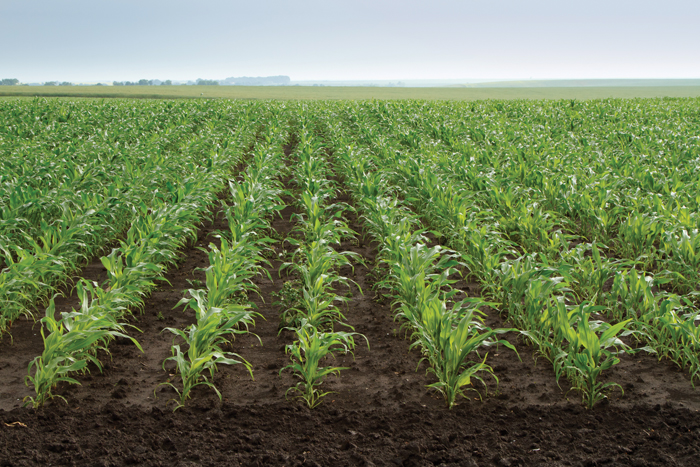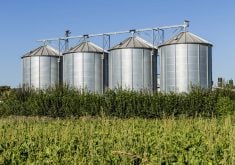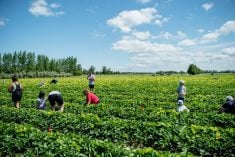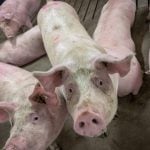Corn acres in Manitoba aren’t expected to grow this year, partly because of a lack of risk management tools, according to the Manitoba Corn Growers Association.
“The coverage that most corn producers have is maybe 50 to 60 per cent of their cost of production,” said association president Myron Krahn. “In a risk management strategy, that leaves a lot of financial risk out there for producers, so that certainly holds them back for sure.”
Several producers brought up the issue at the organization’s annual general meeting in Winnipeg last week.
“It’s so low you can’t do much with it,” said one producer.

Krahn said it’s a perennial issue.
“We meet with crop insurance every year and we talk about this; they are aware of our plight,” he said. “It gets talked about at almost every board meeting… there is a tremendous onus on the producer to manage risk.”
But the longer you grow corn, the better existing risk management tools become, added Theresa Bergsma, general manager for the corn growers.
“It is individual coverage… so if you have five years, you should get to your 10-year average pretty quickly, because they’ll do two for one,” she said.
Crop insurance notwithstanding, those who believe in corn’s potential are willing to take the risk, said Krahn.
Read Also

Still hard to predict precise fertilizer payback
Despite decades of advances, international research finds no clear answer for where and when adding nutrient will fail to boost growth.
“The producers in this province, even the new producers, they seem like they have lots of confidence in them to grow the crop, so that does sometimes outweigh the financial risk,” he said. “Because they do believe they can produce a crop that is profitable in the end, even without crop insurance.”
Like all farmers, the biggest factor corn producers face is weather.
Krahn said that a normal spring is needed to get a full crop in, but what exactly counts as normal these days is hard to define.
“A normal spring would be any year where we’re getting seeding done in the month of May. If that happens in most areas of the province, we’ll see acres similar to, or slightly above the acres last year,” said Krahn, who farms near Carman.
Potential to grow
Approximately 315,000 acres were seeded in Manitoba in 2014; of those about 65,000 were for silage. Acreage peaked at 430,000 in 2013.
“I know we’re in a little bit of a lull right now, but I think corn is going to move ahead and will follow soybeans,” said Dennis Thiessen, who sits on the association’s board and farms near Steinbach. “With new, earlier varieties with good yield that are coming forward — things look promising for corn… and I think we’ll see more corn going west and going north, and down the road the corn industry will be very healthy.”
To that end, the association is putting its checkoff dollars toward research. Funding has also been provided through Growing Forward 2 and the Western Grains Research Foundation.
But not all farmers are on board with the levy.
The number of producers requesting a return of their checkoff dollars has increased in the last year, Bergsma said.
“We’ve chatted with those producers, and for whatever reason they felt they could go it alone,” she said.
Krahn added that the increase in refunds hasn’t affected the association’s ability to embark on research projects.
“We certainly prefer that members keep their checkoffs in, so that we can advance the program, and advance corn production within Manitoba,” he said. “Without those checkoff dollars, there wouldn’t be money available for research to help manage risk on the growing side of the crop.”
But he added that the vast majority of corn producers see the value of funding research.
While corn is unlikely to ever command the number of acres that canola or wheat do, the president said he does expect to see strong growth in corn acres over the next 10 or 15 years.
“It’s not Iowa here when it comes to corn; you can’t plant knowing you’re going to get a crop. We struggle, and the producers do, I think, a fantastic job,” Krahn said. “They do top-notch work… they deserve kudos.”















